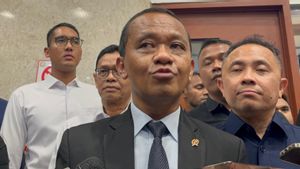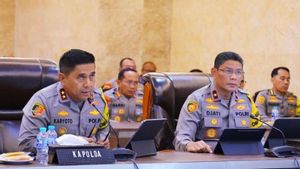JAKARTA - On December 26, 1862, it became an unforgettable day for this small, hitherto quiet town. United States (US) hanged 38 Dakota Indian men in Mankato, Minnesota. US President Abraham Lincoln ordered the executions following the Dakota War in 1862, a six-week rebellion of the Dakota against the whites after the US broke its promise to deliver food and supplies to local tribes in exchange for surrendering tribal land.
Commenting on the hungry Indians, a white man named Andrew Myrick reportedly said, "If they are hungry, let them eat grass." After the uprising, 2,000 Dakota Indians were arrested. Several hundred people were sentenced to death. US President Abraham Lincoln pardoned all but thirty-eight people to remain executed.
To quote the US Dakota War, Saturday, December 26, a person has been given a last minute reprieve. An estimated 4,000 spectators filled the streets of Mankato and the surrounding area. Colonel Stephen Miller, appointed to keep the peace in the days leading up to the hanging, declared martial law. It prohibits the sale and consumption of alcohol within a ten mile radius of Dakota.
As the men take their designated places to hang, they sing the Dakota song as white covers cover their faces. The drumming marked the start of the execution. The people are holding each other's hand. With one hit of the ax, the rope holding their footing was cut.
At first everyone seemed dumbfounded by the scene before them. Only a few moments passed before soft murmurs flowed through the crowd, culminating with several cheers, many of which looked pale and their eyes tightened with fear.
But the execution was a form of victory for those who lost their father during the Dakota War. A boy, near the gallows, has lost his father and mother to the war. He shouted out loud, "Hooray, hooray!" because he saw people who he considered murderers, received the punishment accordingly.
After hanging for half an hour, the bodies of the men were lifted and transported to a shallow mass grave on the sand between the main Mankato road and the Minnesota River. Before morning, most of the corpses had been dissected and retrieved by doctors for use as medical research corpses.
After the mass executions on December 26, it was discovered that two men who should have been free were hanged. The first is Wicaƞḣpi Wastedaƞpi, who goes by the name Caske (meaning firstborn), reportedly stepping forward when the name "Caske" is called.
Then separated for execution from other prisoners. The other, Wasicuƞ, was a young white man who was adopted by the Dakota Indians from an early age. He was previously released from the death penalty.
The English, Chinese, Japanese, Arabic, and French versions are automatically generated by the AI. So there may still be inaccuracies in translating, please always see Indonesian as our main language. (system supported by DigitalSiber.id)









